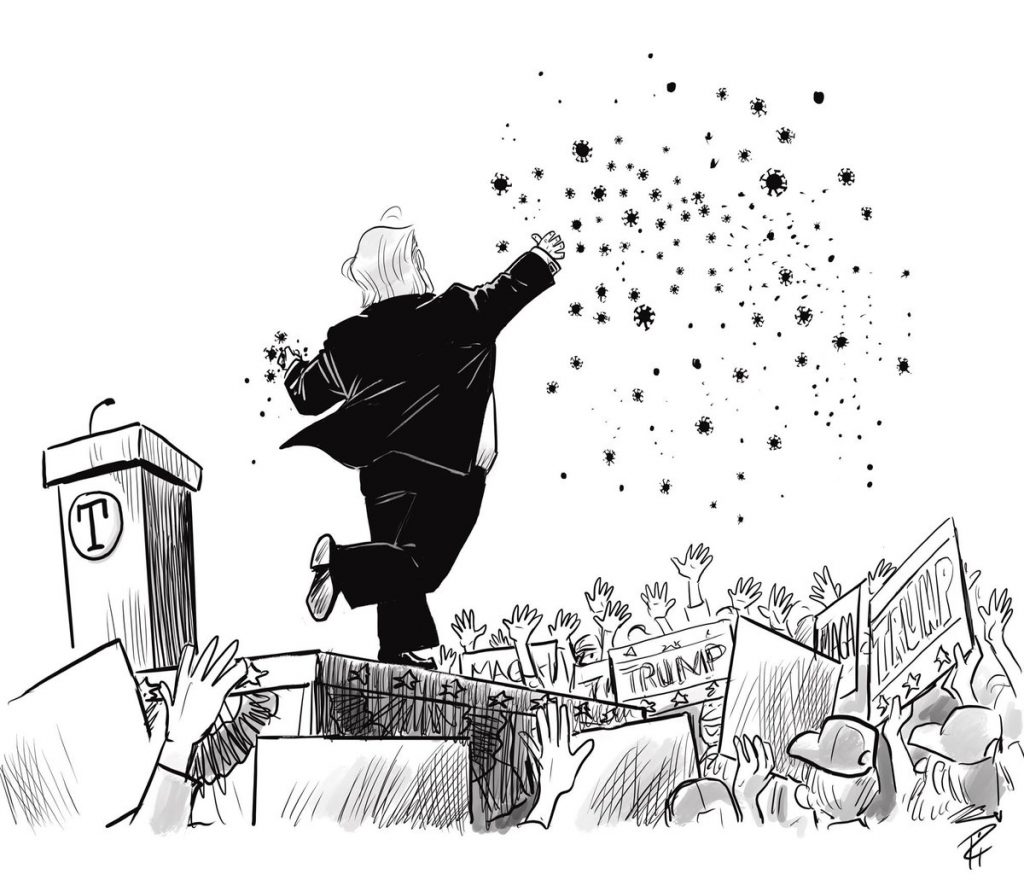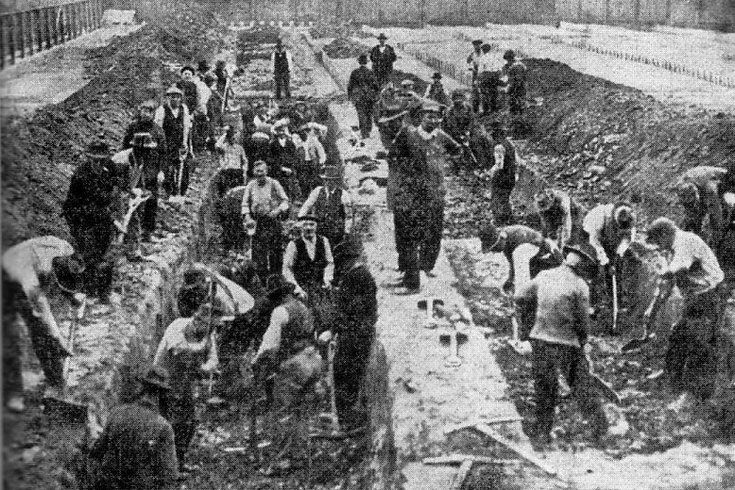
Remember this quote from January 2016?
“I could stand in the middle of Fifth Avenue and shoot somebody, and I wouldn’t lose any voters, OK? It’s, like, incredible.”
Only in 2020 Donald Trumps didn’t need a gun. All he needed was a hefty viral load of SARS-COV 2 and a callous disregard for others‘ safety, perhaps even their very survival.
Meanwhile, the West Wing outbreak continues to grow, with more than a dozen people in the president’s close orbit infected, and the potential for hundreds of additional cases among his donors, supporters, and their friends and families spread out from Duluth, Minn. to Doral, Fla.
But if you thought he’d come out of this experience in any way chastened, or at least empathetic for the plight of the 7.4 million other Americans who have contracted the virus, none of whom have access to the kind of medical treatment that he received, or the families and loved ones of the more than 205,000 who have died, think again.
I guess those folks were losers and suckers too.
So was he right? Could Trump stand in the equivalent of Fifth Avenue, shoot someone, and not lose any voters? We’ll find out in a few short weeks.
